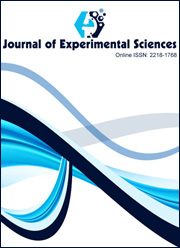Effects of tillage systems on Soil Chemical Properties in Oxic Paleustalf Soil of a Degraded Land
Keywords:
soil fertility, zero tillage, soil organic carbon, soil compaction, conventional tillageAbstract
The study was conducted at the research farm of Institute Of Agricultural Research And Training (I.A.R & T), Ibadan. Nigeria. The trash on slash and burn plots were burnt while trash on zero tillage and conventional tillage were removed. Only conventional tillage plot was ploughed and harrowed. The soils of the study site belong to Oxic Paleustalf and classifies locally as Iwo Series. Soil sample were collected at depth of 0.15cm with a core sampler and 15-30cm with soil auger on all the 12 plots before and after the experiment. Three tillage practices {Conventional Tillage (CT), zero tillage (ZT) and slash and burn (SB)} were evaluated in a split plot design of (2m x 2m size) of four replications. Soil organic carbon, total nitrogen, sodium, calcium, phosphorus, soil organic matter and soil pH were evaluated. Conventional Tillage resulted in compaction of soil and poor soil organic matter status. There were no significant difference in maize plant height and stem girth. In addition, no tillage resulted in greatest organic matter and lowest in maize stem girth, height and yield while CT and SB resulted in higher maize grain and stover yield and soil available phosphorus. SB was significantly higher in calcium, potassium, and exchangeable bases but decreases soil organic carbon. Therefore, for sustainable production in maize yield, ZT and CT is highly recommended over SB except for that, burning helps to release concluded mineral nutrients such as Mg, Ca, and available P.Downloads
Download data is not yet available.
Published
01-07-2013
How to Cite
Adigun, M., S. Are, O. Oladitan, and B. Ikhane. “Effects of Tillage Systems on Soil Chemical Properties in Oxic Paleustalf Soil of a Degraded Land”. Journal of Experimental Sciences, vol. 4, no. 2, July 2013, pp. 27-31, https://updatepublishing.com/journal/index.php/jes/article/view/1978.
Issue
Section
Articles



 .
.